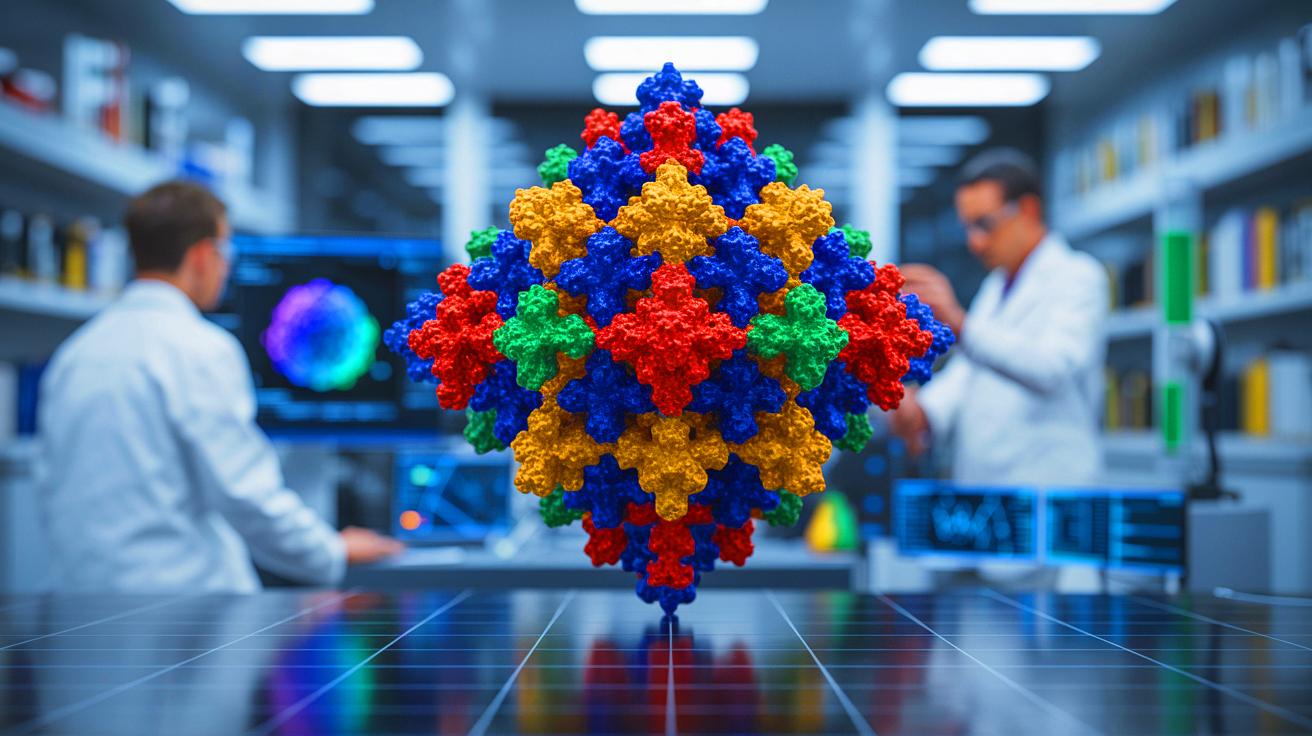- 🔬 Researchers at the University of Michigan have proven that quasicrystals are not anomalies but stable structures with complex, non-repeating patterns.
- 💡 The study overcame traditional modeling challenges by simulating tiny nanoparticles of quasicrystals to estimate their bulk energy.
- 🚀 This breakthrough could revolutionize material science, opening the door to innovative applications in fields like electronics and quantum computing.
- 🧩 The researchers developed a new algorithm to handle computational demands, significantly speeding up calculations through GPU acceleration.
Quasicrystals, once thought to be mere scientific curiosities, are now proving to be genuinely stable structures that challenge our understanding of atomic order. Thanks to advancements in computational power and innovative algorithms, researchers have demonstrated that these materials are not just accidental formations. This breakthrough could revolutionize material science, opening the door to a new era of complex, non-repeating structures. Let’s delve into the fascinating world of quasicrystals and explore what makes them so unique and promising for future applications.
The Dilemma with Quasicrystals
Quasicrystals first came to light in the 1980s when scientists noticed certain alloys forming atomic structures with five-fold symmetry, a pattern not seen in traditional crystals. Unlike the repeating patterns of normal crystals, quasicrystals exhibit order without repetition, akin to a starfish’s intricate shape. This discovery initially perplexed physicists, challenging the long-held belief that all solids with long-range order must repeat.
Daniel Shechtman’s groundbreaking work on quasicrystals, which eventually earned him a Nobel Prize in 2011, faced skepticism for years. Even after their existence was confirmed, a critical question loomed: Are quasicrystals thermodynamically stable, or are they simply the byproducts of rapid cooling, much like how glass forms a disordered structure when cooled quickly? To answer this, scientists needed to calculate the internal energy of quasicrystals compared to competing crystal structures.
However, the typical tool for these calculations, known as density functional theory (DFT), relies on modeling small repeating units of a material. Because quasicrystals do not repeat, this approach fell short. The new study offers an intriguing solution, pushing the boundaries of what we know about atomic order in solid matter.
What Makes a Quasicrystal Stable?
In their pursuit of understanding quasicrystals, researchers at the University of Michigan devised a novel approach. Instead of attempting to model an infinite quasicrystal, they simulated tiny chunks of it, known as nanoparticles. By calculating the energy of these small fragments and scaling up the results, they estimated the bulk energy of a full quasicrystal.
If this energy was lower than that of other potential phases, it indicated that the quasicrystal was energetically favored and truly stable. The researchers applied this method to two well-known quasicrystals: one composed of scandium and zinc, and the other of ytterbium and cadmium. Their calculations revealed that both quasicrystals are stable, as they possess the lowest possible energy for their elements. This means the atoms naturally prefer these unusual patterns, not by chance, but because it’s the most stable configuration under the right conditions.
Achieving these results required overcoming significant computational challenges. Each time the number of atoms in their model was doubled, the computational load increased eightfold. To address this, the team developed a new algorithm that minimized communication between computer processors, speeding up calculations dramatically. With GPU acceleration, they could simulate hundreds of atoms at once, confirming the stability of quasicrystals and setting the stage for further research into aperiodic materials.
Time to Think Beyond Ordered Arrangements
This research marks a turning point in condensed matter physics, demonstrating that quasicrystals, despite their complex patterns, can be just as stable as ordinary crystals. This finding redefines how scientists view order in solid matter and opens up new possibilities for designing materials with intricate, non-repeating structures.
The implications extend beyond quasicrystals. The team’s innovative method for calculating energy in non-repeating or disordered systems can be applied to a variety of challenges. For example, it might help scientists better understand amorphous materials, glasses, and interfaces between different solids, areas where traditional modeling tools fall short. Furthermore, this approach could advance quantum materials research, as many quantum devices rely on defects or irregularities in crystals.
By simulating glass, amorphous materials, and crystal defects, researchers can explore new frontiers in quantum computing. This study, published in the journal Nature Physics, not only enhances our understanding of quasicrystals but also paves the way for future innovations in material science.
The Future of Quasicrystal Research
With this newfound understanding of quasicrystals, researchers are poised to explore their potential applications in various fields. From creating more efficient materials to enhancing quantum computing, the possibilities are vast. The study’s authors have opened the door to first-principles investigations into the relationships between structure, bonding, and stability in aperiodic materials.
As we continue to unravel the mysteries of quasicrystals, we must ask: How will this knowledge shape the future of material science and technology? Will these complex structures lead to breakthroughs in industries ranging from electronics to aerospace? The answers lie in further research and exploration, driven by the curiosity and innovation of scientists worldwide.
Our author used artificial intelligence to enhance this article.
Did you like it? 4.6/5 (29)
